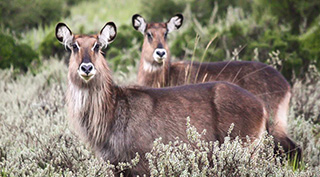
Unit 2: How Animals Work
Additional Resources
Unit Overview
From our studies so far, we have learned that we share Earth with many other living things. Biologists study living things to learn as much as they can about them. They want to know how many different species there are and how different species are related. We know that human activity can make significant changes that impact all life on Earth. In order to take care of Earth, we need to understand where we fit in. With so many species on Earth, how can they all survive?
Big Ideas
- Animals, both wild and domesticated, can be classified according to life needs, behavior, and physical characteristics, including physical appearance, movement, habitat type, and relationship to humans.
- Each species of animals has developed unique adaptations for survival.
Background
All life forms exhibit adaptations to the environments in which they live. These adaptations enable them to survive and maintain their populations. Many physical and behavioral adaptations, such as body coverings, hibernation, and migration, are associated with climatic conditions. Adaptations to predator and prey relationships may include behavioral (e.g., signaling, flight, freezing) as well as physical (e.g., camouflage, mimicry) variations.
Each habitat is suitable only to those life forms that are adapted to its ecological conditions.
Each class of animal shares many characteristics, but each species has developed its own unique adaptation(s) to survive in its environment. We will learn about some different adaptations for survival.
